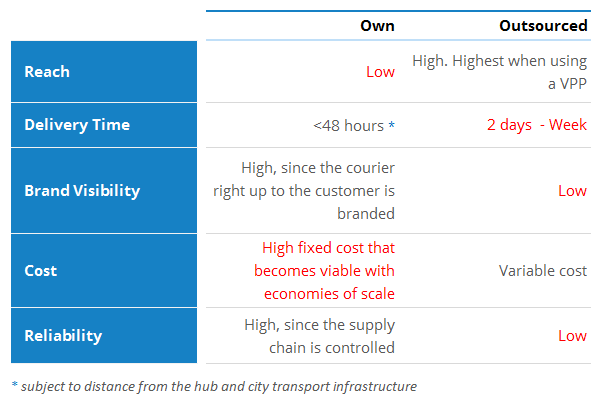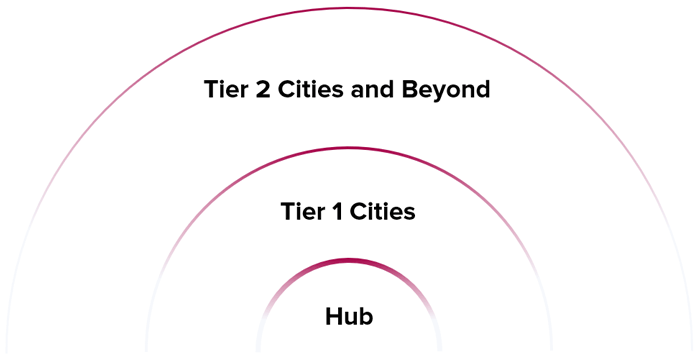Last mile delivery - own or outsourced?
For any e-commerce venture, last-mile delivery is a critical component of their business. This article discusses the various options for last-mile delivery and weighs their effectiveness.
In an earlier article, I had listed supply chain as the second most important aspect of an e-commerce venture. Keep in mind that the e-commerce supply chain is different from traditional because there are no middlemen involved in the final delivery. The critical element in a supply chain is the last-mile delivery of the intended goods to the customer; Ventures have succeeded or failed because of their last-mile capability or lack of it. You can either own or outsource the last-mile delivery, and this article attempts to explain these two in the context of various circumstances.
Outsourcing the last mile... This involves outsourcing the forward logistics or the last mile to a courier service provider or VPP, while usually maintaining control of inventory and warehousing. The advantage of outsourcing the service is high reach and coverage since you can reach out to customers across the country. In the case of VPP, you also get unprecedented access to smaller towns and villages that are beyond the reach of traditional courier service. However, reliability is an issue since the product may get delivered to the customer well beyond the average delivery time. In effect, the overall customer experience leaves a lot to be desired. Then there is the added cost that puts a strain on the bottom line.
Owning the last mile, or Self-Fulfillment... Here the order fulfillment, end-to-end is owned by the company, right from inventory management, delivery to the customer and reverse logistics (returns).
Owning the fulfillment process makes it possible to offer the best TAT (turn around time) in delivery since the organization is in control of the entire process. There is also a consistent brand appeal throughout the interaction, hence enhancing the overall brand experience. All this comes at a cost since it requires investing in last-mile delivery resources and the cost can have a big impact on the profits. However, since this is a fixed cost, with economies of scale the average fulfillment cost per customer is reduced.
Here is a matrix of the implications of Outsourcing or Owning the last mile...

Now the pros of owning the last mile far outshine that of outsourcing it; however the lack of reach is an impediment. The best solution is for the ventures to adopt a hybrid approach, a combination of own and outsourced.
Refer to the illustration...

The hybrid approach entails owning the last mile delivery for Tier 1 cities (or ones that have a high transactional volume), connected to the inventory hubs by air. Conversely, the last-mile delivery of Tier 2 cities and beyond can be outsourced to couriers or VPP. The hybrid approach ensures the fastest delivery to most customers while maintaining high penetration across the country.



